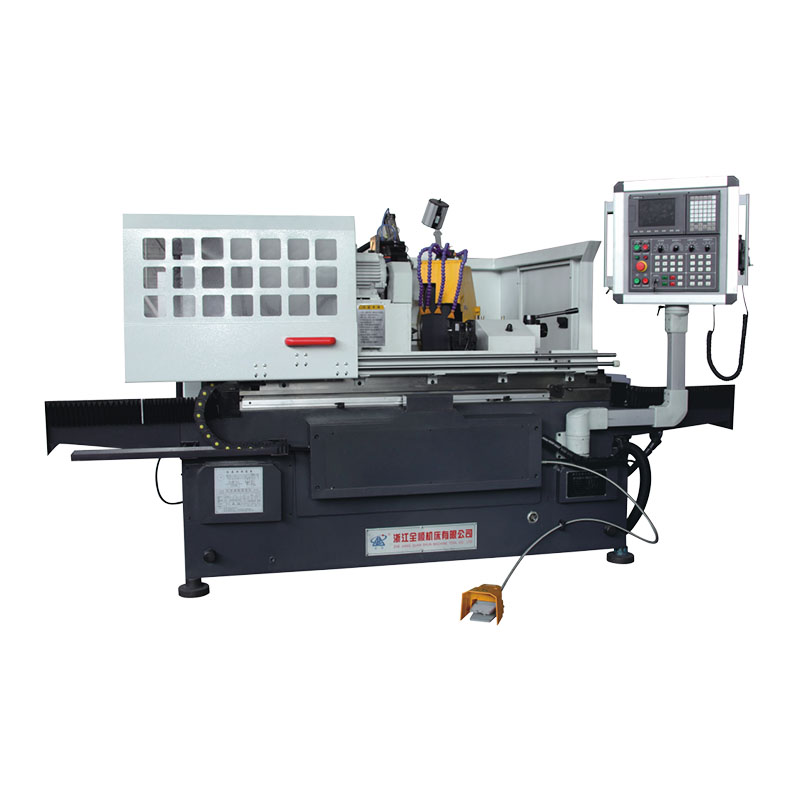The outer circle of the front and rear bearings of the […]
The outer circle of the front and rear bearings of the grinding head of the surface grinder is tapered, and there are only 3 equally divided flanges in contact with the inner taper hole of the bearing seat. 12 axial grooves are evenly opened on the bearing. When the bearing moves axially, the bearing and the shaft The radial clearance changes; when the bearing is tightened, only the internal clearances of the three flanges become smaller, and the remaining parts are elastically deformed to form three oil wedges, which are integral three-oil wedge hydrodynamic sliding bearings. The bearing has small clearance and good rigidity, and its lubrication method is self-priming lubrication. During the course of use, the grinding head hung on the shaft, vibrated, and heated up.
Analyze the cause of the failure
After analyzing the cause of the failure in the equipment, it was found that there were longitudinal cracks on the surface of the journal part of the grinding wheel shaft in the surface grinder. It was found that the grinding wheel shaft was bent, with only superficial longitudinal cracks in the journal part. The outer cone flanges of the front and rear bearings are in good contact with the bearing seat hole, and the inner hole of the bearing has no obvious damage. Therefore, it is believed that the main reason why the grinding head cannot work is: the geometric accuracy of the front and rear bearings has changed, and the shape and size of the three oil wedges are inconsistent. Therefore, it was decided to use the repair plan: repair the front and rear bearings and repair the grinding wheel shaft with hard chrome plating (0.02mm).
Matters needing attention in the grinding process
Make the rotation direction of the grinding rod consistent with the working rotation direction of the grinding wheel shaft. This is conducive to the self-suction oil flow quickly through the radial gap to form an oil wedge during work, thereby improving the running performance.
1. During the grinding process, the front and rear bearings should be continuously adjusted (to maintain a certain feel) to improve the grinding efficiency and ensure the geometric accuracy of the bearing.
2. Remove excess abrasive at the end of the bearing at any time to avoid bell mouths on the front and rear bearings.
3. After grinding for a certain period of time, take out the grinding rod, remove the grinding agent in the grinding rod and the front and rear bearings, check the grinding effect and the wear condition of the grinding rod, if the grinding rod is worn, it needs to be trimmed to ensure the front , Consistency of the bore diameter of the rear bearing.
4. When doing the final grinding, use as little abrasive as possible and properly tighten the front and rear bearings to ensure the final geometric accuracy of the front and rear bearings.
www.china-quanshun.com
